Stanford Lends a Hand
————————–
From grocery runs to online fundraisers, the Department of Medicine community found ways to help others amid the coronavirus pandemic
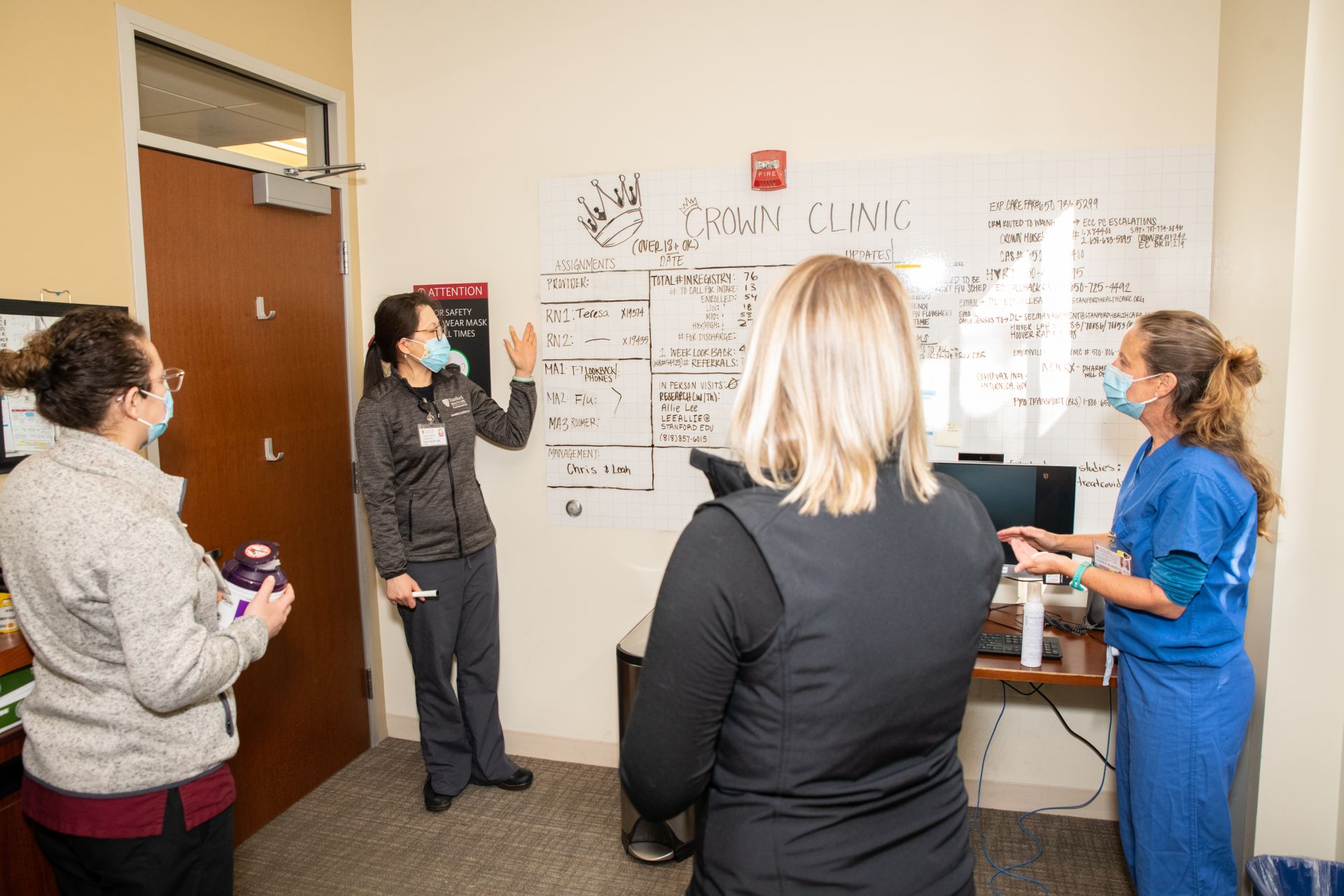
Stanford Lends a Hand
————————–
From grocery runs to online fundraisers, the Department of Medicine community found ways to help others amid the coronavirus pandemic
It was a busy day in early April 2020 at Stanford’s newly opened drive-through COVID-19 testing site. People were already lined up in their cars outside the Express Care Clinic parking garage, waiting for a nasal swab that would tell them if they had been exposed to the virus.
It was a busy day behind the scenes, too, as practitioners, nurses, assistants, and physicians, all dressed in full protective gear, rushed around the premises administering tests, transporting samples to the lab, and triaging patients.
Thanh Khong, PA-C, a physician assistant who was overseeing testing operations and logistics at the site, noticed that many of his colleagues had been on their feet for hours and looked tired. He went out to buy standing mats, which allowed them to perform their jobs more comfortably, and brought in heaters and a music speaker to keep their energy and spirits high. He made sure they were fed and became known—and beloved—for bringing in banh mi sandwiches for lunch.
Khong’s acts of generosity characterize the entire Department of Medicine’s response to the pandemic. As the country plunged into lockdown, people went to great lengths to ease the burdens of others and find ways to lend their expertise and resources to help those most in need.
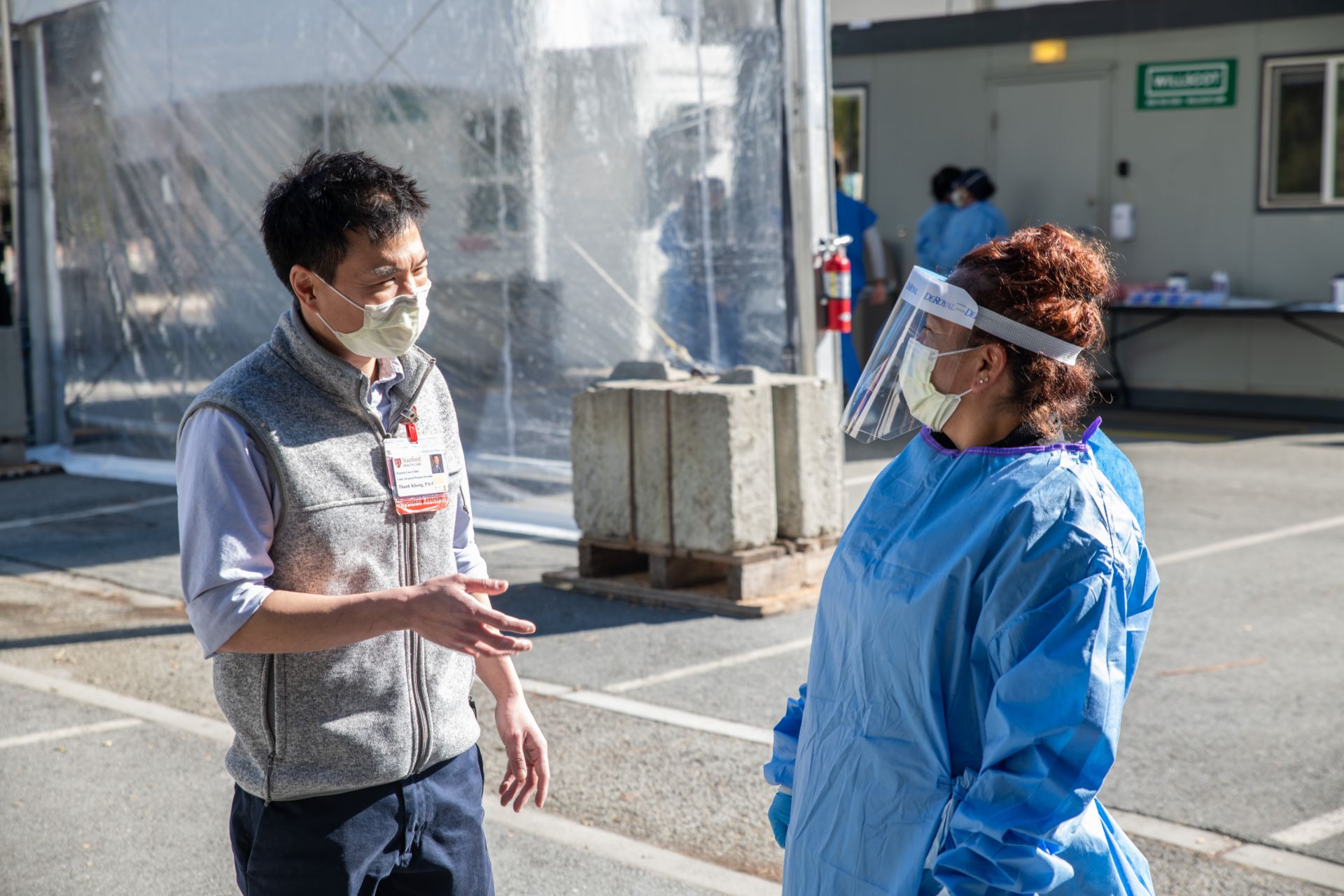
Thanh Khong, PA-C (left), noticed that many of his colleagues had been on their feet for hours and looked tired
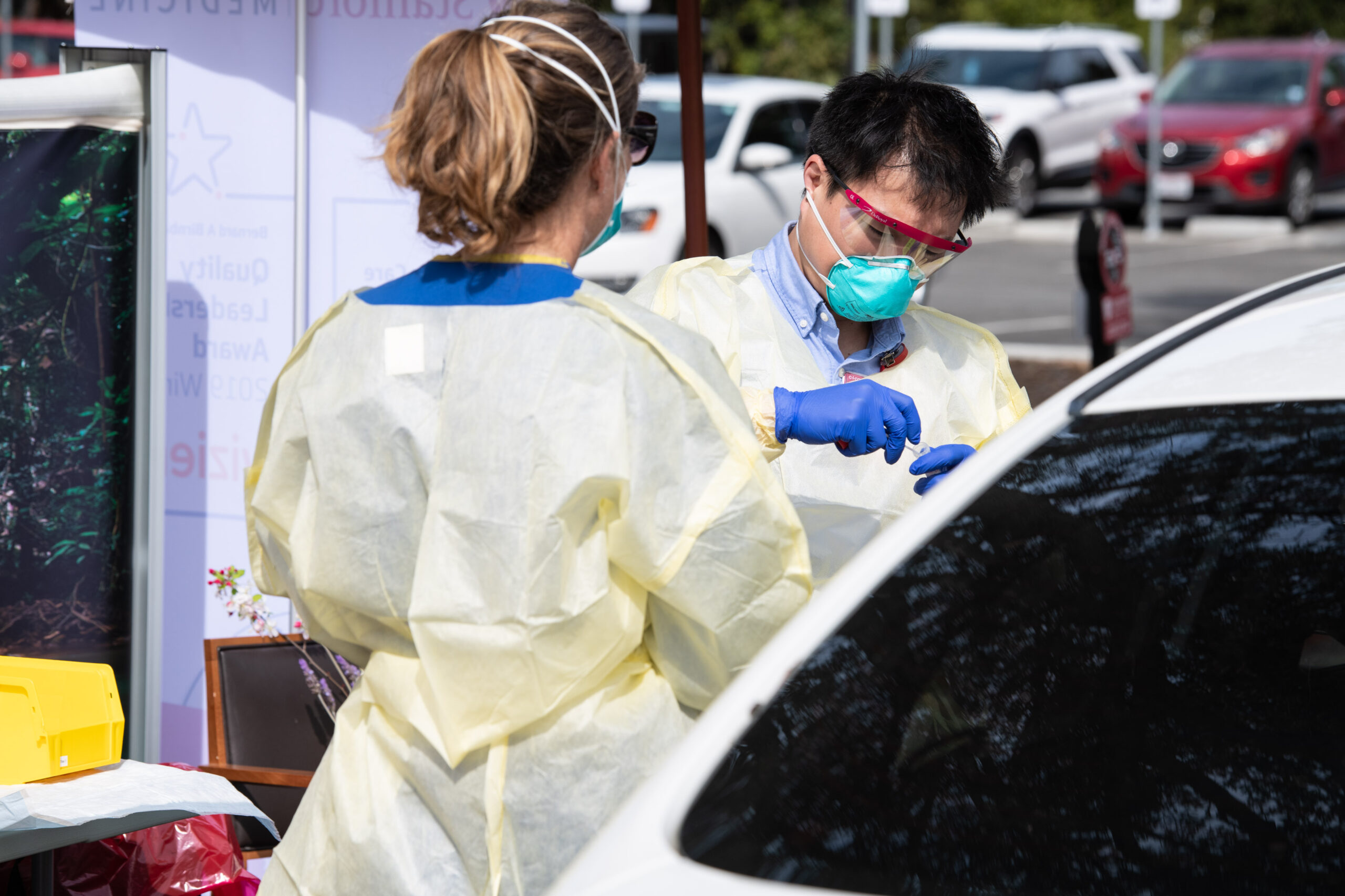
People were lined up in their cars waiting for a nasal swab
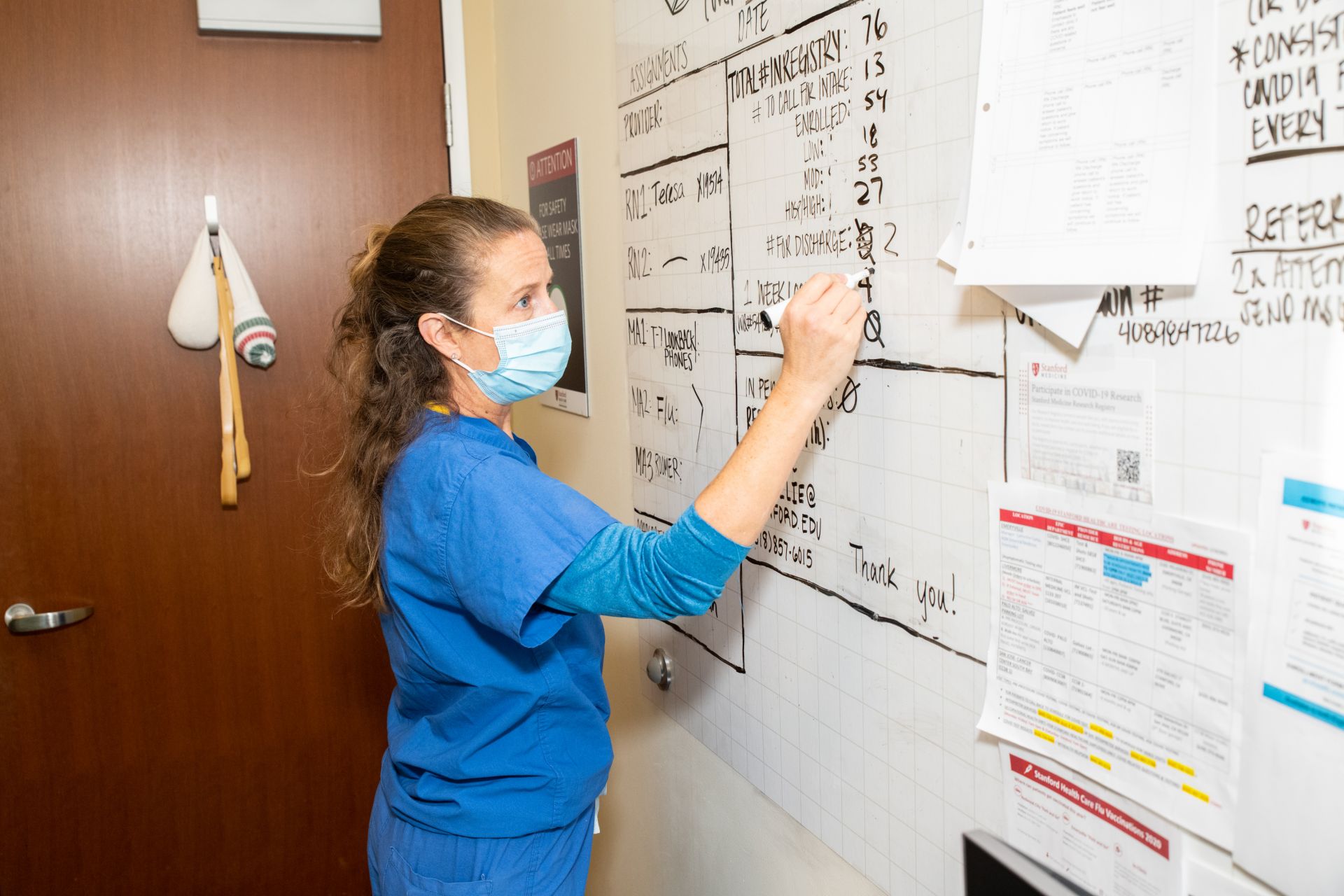
Linda Barman, MD
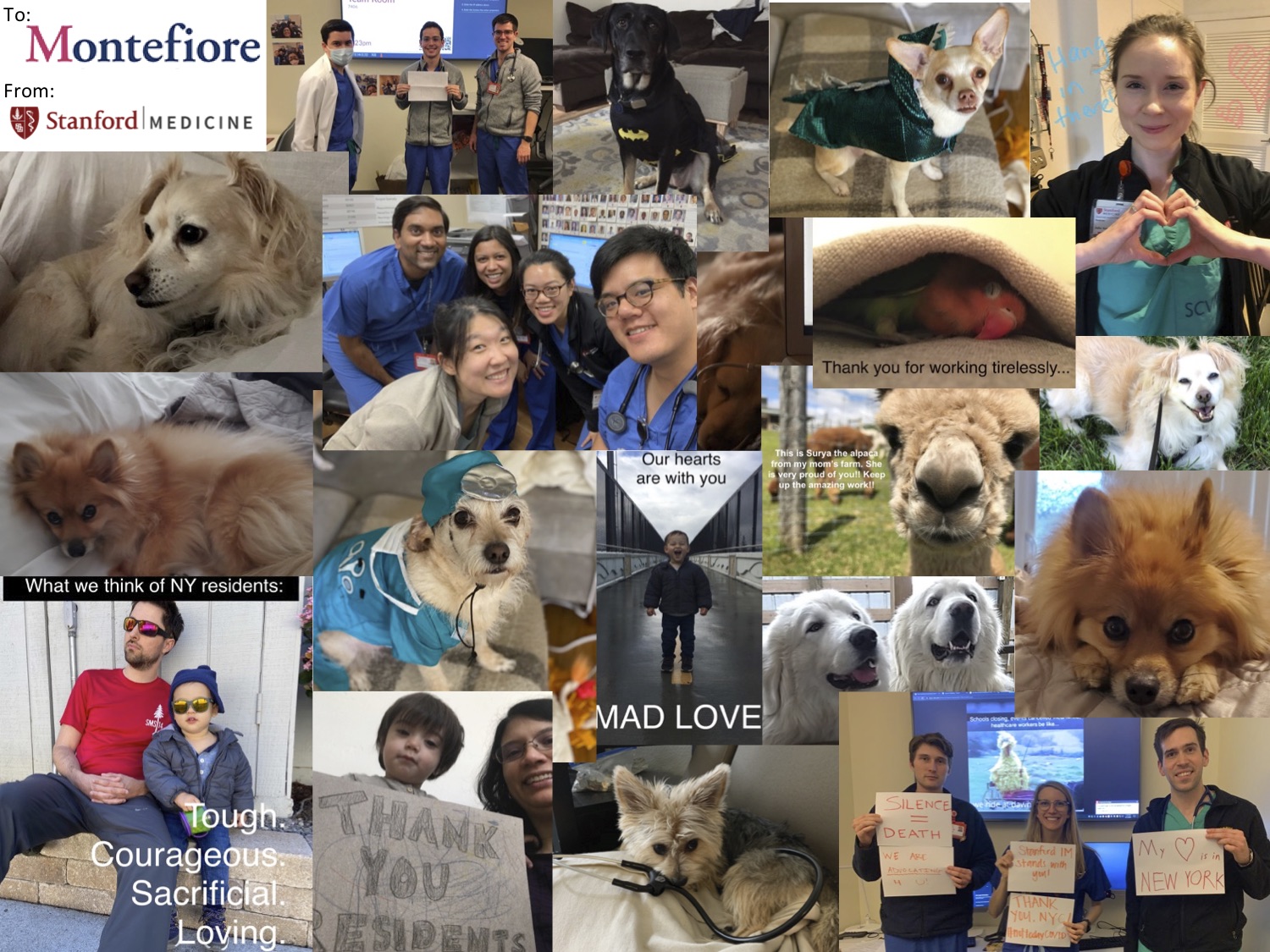
A sampling of the thank-yous Stanford residents sent to residents at Montefiore Hospital
Donations and comments came pouring in, as people from all over the country joined together to contribute and show their support.
“I believe in the work these young, dedicated physicians are doing for the people of NYC,” wrote one anonymous contributor.
“Thank you, Stanford internal medicine, for coordinating and thank you to all of our NYC friends for your bravery and hard work,” wrote a group of internal medicine residents from UCSF.
“The world appreciates everything you are doing for us,” another commenter chimed in.
Within days, the chief residents doubled their fundraising goal to $10,000. By the end of the week, they moved their goal even further, to $20,000. The hospitals they supported expanded as well, from Columbia, NYU, and Lenox Hill to “areas that were disproportionately affected because of multiple social determinants of health,” like SUNY Downstate, New York-Presbyterian Queens, and Elmhurst Hospital.
